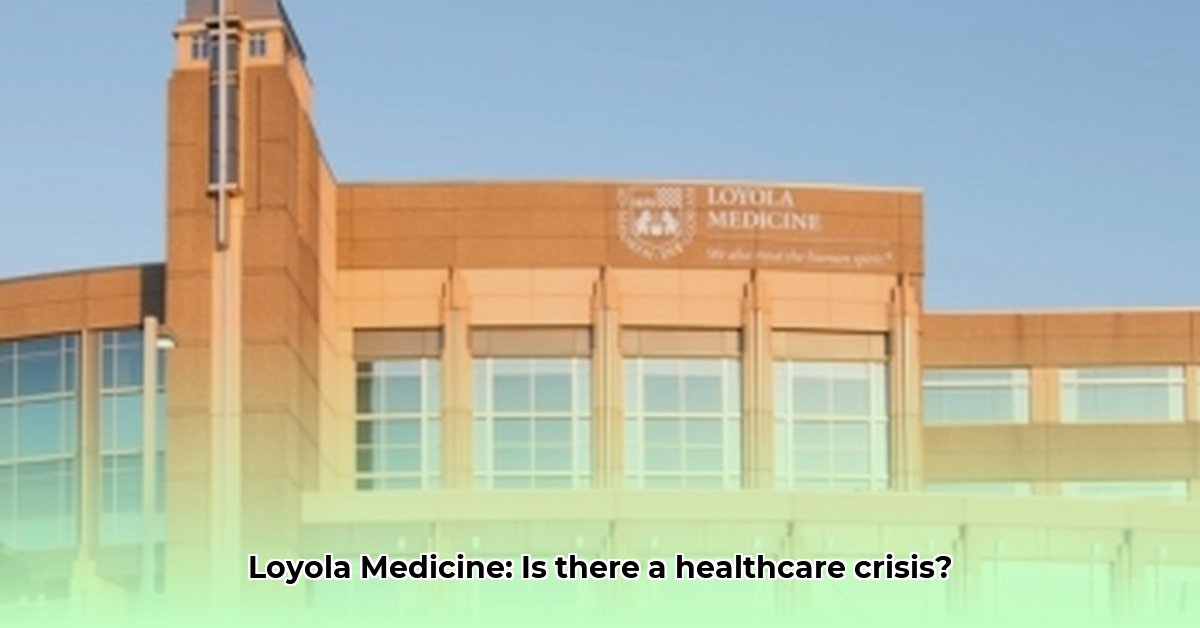
2160 South 1st Avenue Maywood IL: A Loyola Medicine Healthcare Update
Loyola University Medical Center (LUMC), located at 2160 South 1st Avenue in Maywood, Illinois, is a leading healthcare provider offering a wide array of sophisticated medical services. A 547-bed facility, LUMC boasts a Level I Trauma Center (handling the most severe injuries), a Burn Center, a Transplant Center including stem cell transplantation, and a highly regarded Oncology department. Its capabilities extend to specialized centers for cardiology, orthopedics, and ophthalmology. Furthermore, LUMC operates a Level III Perinatal Center, catering to high-risk pregnancies and newborns, and a Stroke Center recognized for its collaborative treatment approach. This breadth of services positions LUMC as a comprehensive medical hub. However, a significant challenge impacts many potential patients: LUMC's out-of-network status with Humana insurance.
How does this impact patients seeking treatment? The out-of-network designation means significantly higher out-of-pocket expenses for individuals with Humana Medicare Advantage plans.
The Humana Out-of-Network Issue: Implications for Patients and the Healthcare System
LUMC's out-of-network status with Humana presents substantial challenges for patients insured by Humana. The immediate consequence is dramatically increased out-of-pocket costs. Patients may face unexpectedly high medical bills, potentially deterring them from seeking necessary care at LUMC, even when it is the most appropriate facility for their needs. This situation raises concerns regarding healthcare equity and access.
What are the financial ramifications of this discrepancy in coverage? The financial impact is substantial, potentially forcing individuals to forgo necessary treatment due to unforeseen costs. This disparity undermines the goal of readily available, high-quality healthcare. The situation necessitates a closer examination of the financial arrangements between providers and insurers, particularly concerning reimbursement rates and their impact on patient accessibility. This issue isn’t merely a financial one; it involves access to crucial medical services, the quality of healthcare received, and the overall wellbeing of the affected patient population.
Analysis and Discussion: Unpacking the Financial and Access Disparities
The out-of-network designation creates a significant barrier to care. The higher costs associated with treatment at LUMC for Humana patients create financial hardship and potentially delay or prevent necessary medical interventions. This highlights a critical issue within the healthcare system: the tension between cost-containment measures employed by insurance companies and the need for providers to maintain high-quality care, often requiring substantial financial investment in advanced technology and staffing. The resulting gap in coverage disproportionately impacts vulnerable populations, raising serious concerns regarding healthcare equity and access.
The lack of in-network access to LUMC's specialized services with a particular insurer could potentially lead to poorer health outcomes for those patients.
Stakeholder Perspectives: A Multifaceted Challenge
The Lumc-Humana dispute impacts multiple stakeholders:
- LUMC Administration: Advocates for fair reimbursement rates to maintain quality care and service levels.
- Humana: Seeks to control costs and manage its network efficiently. Their specific concerns regarding reimbursement rates have not been publicly disclosed.
- Patients: Face higher out-of-pocket expenses, uncertain coverage, and potential disruption to their care.
- Illinois Department of Public Health (IDPH): Monitors the situation to address potential negative impacts on healthcare access and equity within the community. They are likely concerned about the decrease in equitable access to healthcare for specific segments of the population insured by Humana.
Addressing this complexity requires open communication and a collaborative problem-solving approach from all involved parties. Patients should understand that, while the situation isn't ideal, there are steps they can take to address the issue.
Risk Assessment and Mitigation Strategies
The following risk assessment matrix outlines potential negative consequences and proposed mitigation strategies:
| Risk Category | Likelihood | Impact | Mitigation Strategy |
|---|---|---|---|
| Humana Network Disruption | High | High | Continued negotiations; exploration of alternative payer contracts. |
| Patient Portal Security Breach | Medium | High | Continuous cybersecurity upgrades; regular security audits; robust employee training. |
| Legacy IT System Failure | Medium | Medium | Phased system upgrades; robust data backup and disaster recovery plans. |
These steps focus on proactive measures to reduce risks and ensure system resilience.
Conclusion: The Path Forward in Ensuring Equitable Healthcare Access
The out-of-network status of LUMC for Humana insurance creates a significant barrier to equitable healthcare access. Resolving this issue requires a collaborative effort involving LUMC, Humana, and the IDPH. Further, open communication with affected patients is crucial to ensuring they understand their options and can access the care they need. This situation highlights the broader challenges of affordable and accessible healthcare and the urgent need for transparent and equitable policies that benefit both providers and patients. Patient advocacy and proactive engagement with insurance providers and regulatory agencies are essential to mitigating the negative consequences of this vital healthcare access issue. Patients are strongly encouraged to contact their insurance providers to express their concerns and advocate for improved access to high-quality healthcare.